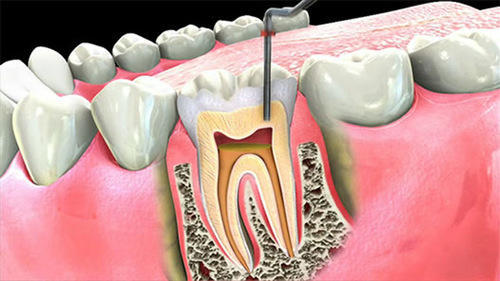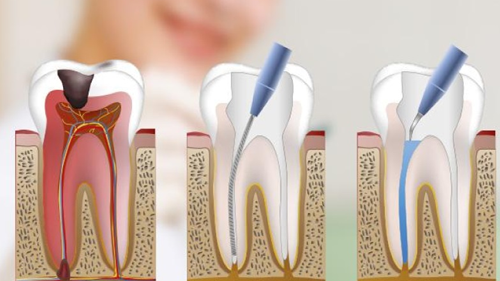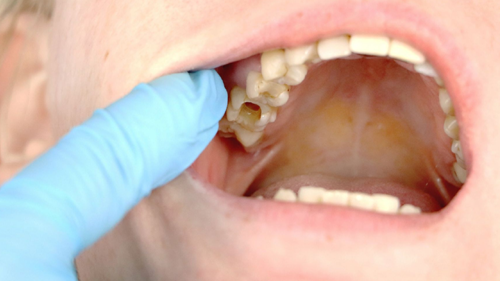Root Canal Treatment
Root canal treatment is a quick, comfortable procedure that can relieve your pain and save your natural tooth. It is done to eliminate bacteria from the infected root canal, prevent reinfection of the tooth and save the natural tooth. When one undergoes a root canal, the inflamed or infected pulp tissue is removed and the inside of the tooth is carefully cleaned and disinfected, then filled and sealed with a inert material.
There’s no need to be worried if our expert team of dentists or endodontist prescribe a root canal procedure for your tooth/teeth, it is being undertaken to save your damaged or diseased tooth. Millions of teeth are treated and saved this way.
Inside your tooth, beneath the white enamel and a hard layer called dentin, is a soft tissue called pulp. This tissue contains blood vessels, nerves and connective tissue, which help grow the root of your tooth during its development. A fully developed tooth can survive without the pulp because the tooth continues to be nourished by the tissues surrounding it.
A modern Root Canal Treatment can usually be completed in one or two appointments, depending on the condition of your tooth and your personal circumstances. Getting a root canal is relatively painless and extremely effective. You’ll be back to smiling, biting and chewing with ease in no time.
Symptoms that might indicate the need for root canal therapy include:
1) Significant, constant pain, including pain that can wake you up at night,
2) Increased symptoms specifically when you lie down,
3) Significant sensitivity to hot or cold,
4) Pain upon chewing on that tooth,
5) A darkening of the color of only one tooth,
6) The appearance of a pimple or fistula in the gum.



What is a root canal?
A root canal is performed by an endodontist or a general dentist and is carried out in three steps.
Extirpation: Cleaning of the crown to control bacterial infection.
Instrumentation: Treating the root canal
Obturation: Filling of the root canal
In a root canal procedure, the dentist removes the infection from the crown and makes an opening to reach the pulp. To know the severity of the infection the dentist will first refer to a tooth x-ray and treat accordingly. A small instrument is used to remove the infected area from where the pulp is removed which is followed by cleaning the root canal by flushing. Remember that the whole process is done under local anesthesia, so just relax and let the expert hands do their job.
What happens after a root canal?
After a root canal procedure, the canal is cleaned and shaped and the open space is then covered using dental materials. In some cases, medication is also applied if the infection is more. The temporary filling protects the tooth by preventing the deposition of food particles and saliva. It is essential to avoid extreme biting and chewing until replaced with a permanent filling. However, if the infection is severe and has spread, the dentist will prescribe antibiotics to completely heal the area. An extraction is the ultimate rescue operation when the infection has almost affected the functionality of the tooth.
Is a root canal painful?
Since patients are given anesthesia, a root canal isn't more painful than a regular dental procedure, such as a filling or getting a wisdom tooth removed. However, a root canal is generally a bit sore or numb after the procedure, and can even cause mild discomfort for a few days.
How long does it take to recover from a root canal?
Although you will most likely be numb for 2-4 hours following the procedure, most patients are able to return to school or work directly following a root canal. However, it is advised against eating until the numbness is completely gone.
How much does a root canal cost?
The cost varies depending on how complex the problem is and which tooth is affected. Molars are more difficult to treat; the fee is usually more. Most dental insurance policies provide some coverage for endodontic treatment.
Generally, endodontic treatment and restoration of the natural tooth are less expensive than the alternative of having the tooth extracted. An extracted tooth must be replaced with an implant or bridge to restore chewing function and prevent adjacent teeth from shifting. These procedures tend to cost more than endodontic treatment and appropriate restoration.

